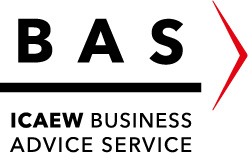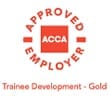
Picking up on Van Benefits
An income tax charge will generally arise where an employee, or a family member, is able to use a work’s van for private use. This will nearly always include home-to-work travel.
From 6 April 2020, the flat-rate van benefit charge crept up once again and currently stands at £3,490 (rising from £3,430 in 2019/20), which equates to an additional £12 a year for a basic rate taxpayer. A lower cash equivalent applies for zero emissions vans.
If an employer also provides the employee with fuel for private use, then a tax charge on the provision of fuel will also arise based on an annual fixed rate. For 2020/21 the flat-rate van fuel benefit charge has been increased from £655 to £666.
The benefit charge applies regardless of the employee’s earnings rate but may be proportionately reduced if the van is only available for part of a tax year, and/or by any payments made by the employee for private use.
For 2020/21, a basic rate taxpayer will pay £698 for the use of a work’s van (£3,490 x 20%), which equates to around £13.40 a week. For a higher rate taxpayer, the cost will be £1,396.
If fuel is also provided for private use, for 2020/21, a basic rate taxpayer will pay an additional tax of £133.20 (£666 x 20%), and a higher rate taxpayer will pay £266.40.
Tax is normally collected through a restriction to the employee’s Pay As You Earn (PAYE) tax code.
The trouble with pick-ups
Given their versatility and ‘outdoorsy’ nature, double-cabbed pick-ups are increasingly becoming a popular choice for a family vehicle. So, how does this work for the van benefit-in-kind (BIK) tax charge?
To qualify as a van for BIK purposes, a vehicle must be:
- a mechanically propelled road vehicle; and
- of a construction primarily suited for the conveyance of goods or burden of any description; and
- of a ‘design weight’ which does not exceed 3,500kg; but
- not a motorcycle as defined in the Road Traffic Act 1988, s. 185(1). Broadly, this means that it must have at least four wheels.
The design weight of a vehicle, also known as the ‘manufacturer’s plated weight’, is normally shown on a plate attached to the vehicle. What it means is the maximum weight which the vehicle is designed or adapted not to exceed when in normal use and travelling on the road laden.
Human beings are not ‘goods or burden of any description’ so vehicles designed to carry people (such as minibuses) will not be a van for these purposes.
When it comes to double cab pick-ups, former contention has arisen as to whether they should be treated as cars or vans. HMRC now interpret the legislation that defines cars and vans for tax purposes in line with the definitions used for VAT purposes. This means that a double cab pick-up that has a payload of 1 tonne (1,000kg) or more will be accepted as a van for benefits purposes. Payload means gross vehicle weight (or design weight) less unoccupied kerb weight. The 1 tonne rule only applies to double cab pick-ups, not to any other vehicle.
A word of warning though – under an agreement between HMRC and the Society of Motor Manufacturers and Traders (SMMT), a hard top consisting of metal, fibre glass or similar material, with or without windows, is accorded a generic weight of 45kg. Therefore, the addition of a hard top to a double cab pick-up with an ex-works payload of 1,010 kg will convert the vehicle into a car because the net payload is reduced to 965 kg. This in turn, will have the potential knock-on effect of throwing up a much higher BIK tax charge.
For more information on Picking up on Van Benefits, Book a Free Consultation
Need Accountancy Support?
For information on bespoke training, or if you have any other questions for Makesworth Accountant, please fill in your details below




















 148
148